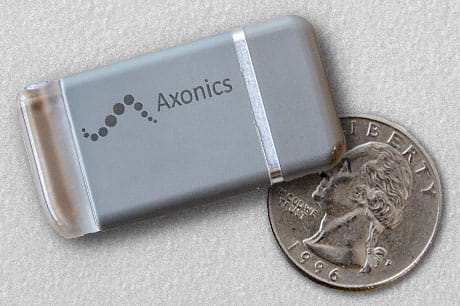An implant calms her overactive bladder
By Kimberly Adler-Morelli
Christina Myers of Selinsgrove, a 45-year-old nursing director at an assisted living facility, knows how to help people whose medical conditions impact their day-to-day activities. And she can empathize, having been diagnosed with overactive bladder in her teens.
“I just thought it was something that I was going to have to live with for the rest of my life,” she says.
Ms. Myers had to urinate three or four times an hour at times. “I couldn’t travel anywhere without knowing where all the bathrooms were. I got up to pee five or six times a night. It was awful,” she says. “People really didn’t understand. They would tell me to drink less fluids. But it didn’t make a difference.”
Over the years, doctors had prescribed medication, which can help some people. But nothing seemed to help Ms. Myers.
 Watch Christina Myers’ story in her own words
Watch Christina Myers’ story in her own words
Treatment brings relief at last
When you have an overactive bladder, you feel an urgent need to urinate — even when your bladder isn’t full. Symptoms can include bladder spasms and incontinence, as well as frequent urination.
Steps to treating an overactive bladder include:
- Making changes to behavior and diet
- Prescribing medication
- Surgical intervention (such as sacral nerve stimulation)
Sometimes the behavioral modification and medications don’t work, as in Ms. Myers’ case. Geisinger urogynecologist James Daucher, MD, suggested sacral nerve stimulation, otherwise known as a “bladder pacemaker,” to relieve her symptoms.
To prepare, Ms. Myers had a one-week trial period using a temporary type of stimulator outside her body. It improved her condition significantly, so she was a good candidate for the implanted version.

As shown in the size comparison at left, the implanted sacral nerve stimulator isn’t much bigger than a quarter.
Dr. Daucher implanted a small device just under the skin of the upper buttock, connecting a wire to the nerves near Ms. Myers’ bladder. The device regulates faulty electrical signals between the bladder and the brain. She can increase or decrease the stimulation with a small remote.
Dr. Daucher has been performing this procedure for 15 years and is among the top 10% of implanters in the country. He says what’s important to him is his patients’ quality of life.
“With overactive bladder, little senses are perceived as big senses,” he explains. “People with the disorder may urinate up to 20 times a day. The data from sacral nerve stimulation therapy show a 60% improvement, on average, which is far better than improvements with medications.”
Some people may not see as big of an improvement as they’d hoped with the implant, but adding medication into the mix can boost the impact.
For Ms. Myers, it was a life-changer
The surgery was quick and minimally invasive. Ms. Myers was back home the same day and recovered easily using ice and a little Tylenol® to help manage the pain. Her only regret? That she didn’t learn about sacral nerve stimulation years ago.
“I have my life back,” Ms. Myers says. “I sleep through the night now. I can travel without having to stop or know where every gas station is or carry a portable toilet with me. I feel like I live a normal life now. I just want people to know there’s help.”
It might be embarrassing to talk to your doctor about symptoms of overactive bladder, but if you’re having them, be sure to ask for help. Left untreated, symptoms can worsen over time. And tell your doctor if they’re affecting your daily life and mental and emotional health, too.
So if you’d rather be on the go than always going, you’re in luck. Treatment can help.
The wellness you need, in a style you’ll love — delivered.
Sign up to have PA Health sent to your mailbox or inbox 4 times a year, for free.
